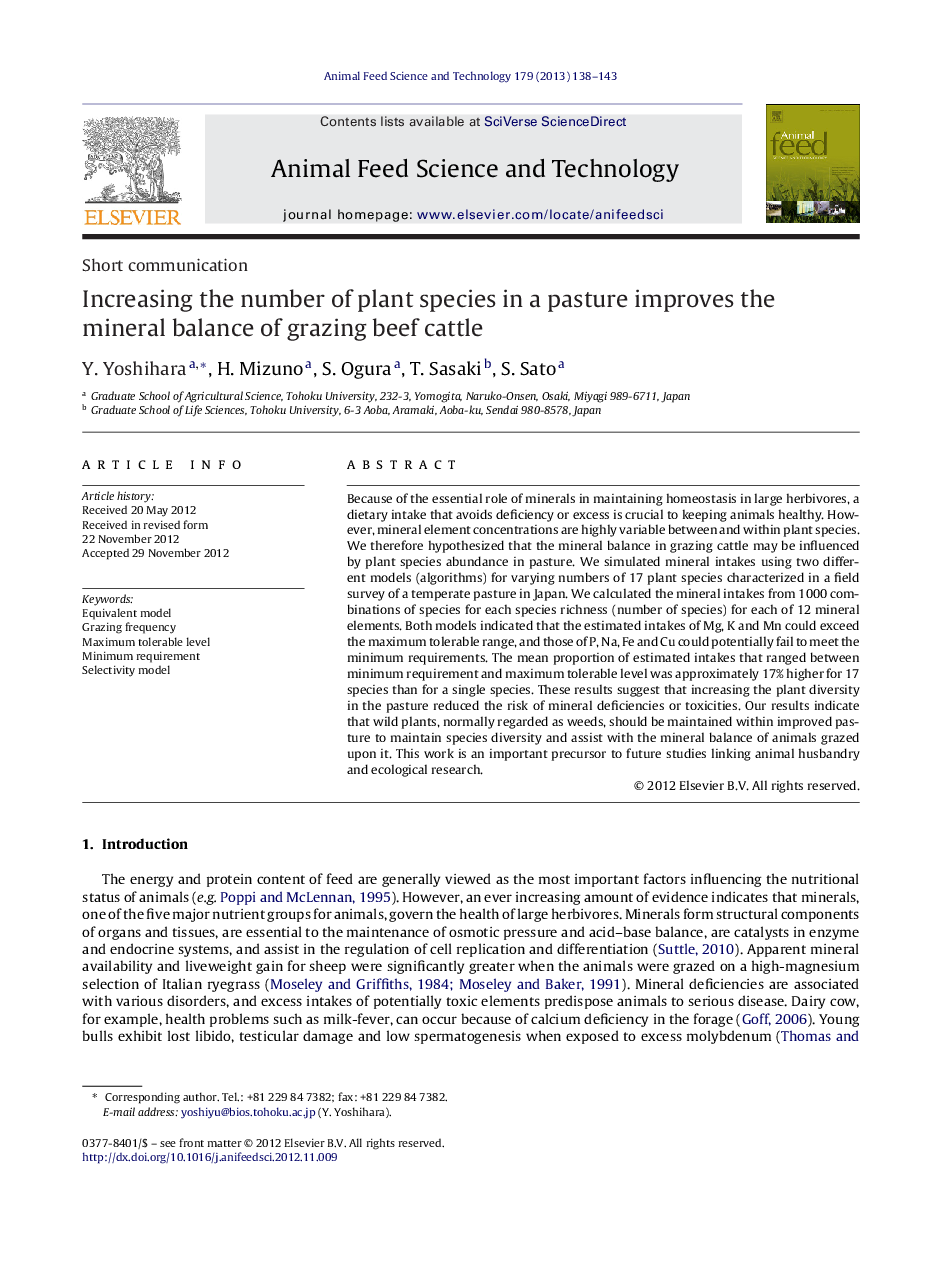| Article ID | Journal | Published Year | Pages | File Type |
|---|---|---|---|---|
| 2419779 | Animal Feed Science and Technology | 2013 | 6 Pages |
Because of the essential role of minerals in maintaining homeostasis in large herbivores, a dietary intake that avoids deficiency or excess is crucial to keeping animals healthy. However, mineral element concentrations are highly variable between and within plant species. We therefore hypothesized that the mineral balance in grazing cattle may be influenced by plant species abundance in pasture. We simulated mineral intakes using two different models (algorithms) for varying numbers of 17 plant species characterized in a field survey of a temperate pasture in Japan. We calculated the mineral intakes from 1000 combinations of species for each species richness (number of species) for each of 12 mineral elements. Both models indicated that the estimated intakes of Mg, K and Mn could exceed the maximum tolerable range, and those of P, Na, Fe and Cu could potentially fail to meet the minimum requirements. The mean proportion of estimated intakes that ranged between minimum requirement and maximum tolerable level was approximately 17% higher for 17 species than for a single species. These results suggest that increasing the plant diversity in the pasture reduced the risk of mineral deficiencies or toxicities. Our results indicate that wild plants, normally regarded as weeds, should be maintained within improved pasture to maintain species diversity and assist with the mineral balance of animals grazed upon it. This work is an important precursor to future studies linking animal husbandry and ecological research.
